Explore Cao Bang, Vietnam’s stunning northern province. Uncover majestic waterfalls, ancient caves, and rich history. Plan your adventure from Hanoi or Halong Bay today!

Nestled in the far north of Vietnam, bordering China, lies a province of unparalleled natural beauty, profound historical significance, and captivating cultural richness: Cao Bang. Often overshadowed by more frequently visited destinations, Cao Bang offers a truly off-the-beaten-path adventure for intrepid travelers seeking dramatic landscapes, authentic local experiences, and a deep dive into Vietnam’s revolutionary past. Far from the bustling streets of Hanoi or the serene waters of Halong Bay, Cao Bang unfurls like a magnificent scroll, revealing towering karst mountains, cascading waterfalls, pristine rivers, and a tapestry of ethnic minority cultures. It’s a destination that promises to leave an indelible mark on the soul, a wild frontier waiting to be explored.
Table of Contents
Cao Bang’s Crown Jewel: Ban Gioc Waterfall

Undoubtedly, the undisputed star of Cao Bang is the magnificent Ban Gioc Waterfall (Thác Bản Giốc). Shared with China, this colossal natural wonder is not just one of Vietnam’s most iconic waterfalls, but also one of the largest and most impressive in Southeast Asia. Picture a colossal expanse of water, spanning over 300 meters, plummeting down a series of limestone tiers into a tranquil, jade-colored river basin below. The sheer volume of water, especially during the rainy season, creates a thunderous roar and a misty spectacle that is both humbling and awe-inspiring.
Visiting Ban Gioc is an experience for all senses. The sound of the rushing water is a constant symphony, the air is cool and moist, carrying the scent of damp earth and lush vegetation, and the sight of the cascading tiers, framed by verdant cliffs and distant mountains, is simply breathtaking. You can rent a small bamboo raft (for a nominal fee) to get closer to the falls, feeling the spray on your face and gaining a truly unique perspective of its immense scale. On the Vietnamese side, there are charming souvenir stalls, local food vendors offering delicious specialties, and a small, picturesque temple (Chùa Phật Tích Trúc Lâm Bản Giốc) that offers panoramic views of the falls and the surrounding landscape.
The best time to visit Ban Gioc Waterfall is during the dry season (October to May) when the water is clear and emerald green, and the weather is pleasant for exploration. However, the waterfall is at its most powerful and dramatic during the rainy season (June to September), although the water might be a little murkier, and the paths can be slick. Regardless of the season, Ban Gioc is a testament to nature’s raw power and beauty, an absolute must-see for anyone venturing into Cao Bang.
Historical Echoes: Pac Bo Cave and Lenin Stream
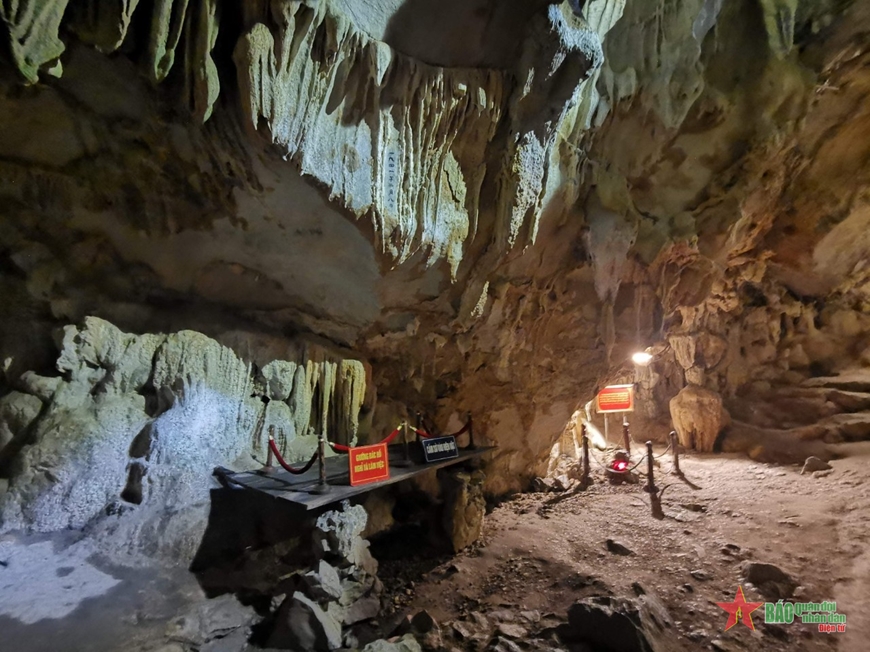
Beyond its natural splendors, Cao Bang holds immense historical significance for Vietnam, particularly for its role in the country’s revolutionary past. It was here, in the secluded caves and dense forests, that Ho Chi Minh returned to Vietnam in 1941 after 30 years abroad, establishing his revolutionary base and laying the groundwork for Vietnam’s independence movement.
The Pac Bo Cave (Hang Pác Bó) complex is a poignant and deeply moving historical site. Located near the Chinese border, this was Ho Chi Minh’s first revolutionary base in Vietnam. Visitors can explore the small, modest cave where he lived and worked, see the “Lenin Stream” (Suối Lê Nin), named by Ho Chi Minh himself, whose crystal-clear waters reflect the surrounding bamboo groves, and visit “Karl Marx Peak.” A short walk along the stream takes you to a small hut where he often held meetings and penned important documents. The entire area is preserved as a national historical relic, offering a powerful insight into the origins of modern Vietnam. The serene, untouched beauty of Pac Bo provides a striking contrast to the momentous political history that unfolded here.

Lenin Stream (Suối Lê Nin) in Cao Bang is a remarkably clear, emerald-green stream nestled within the Pac Bo Cave complex. Named by Ho Chi Minh, who based his revolutionary efforts here in 1941, its serene beauty and pristine waters offer a poignant connection to Vietnamese history. Surrounded by lush bamboo and reflecting the verdant landscape, it’s a tranquil spot where nature and a pivotal past intertwine, making it a must-see for visitors.
See More:10 Unforgettable Tourist Destinations in Sapa – Halong Transportation
Majestic Caves: Nguom Ngao Cave
While Ban Gioc Waterfall draws the crowds, Nguom Ngao Cave (Động Ngườm Ngao), located just a few kilometers away, is a hidden gem that demands exploration. Discovered relatively recently by geologists, this magnificent limestone cave stretches for over 2,000 meters, though only about 1 km is open to tourists.
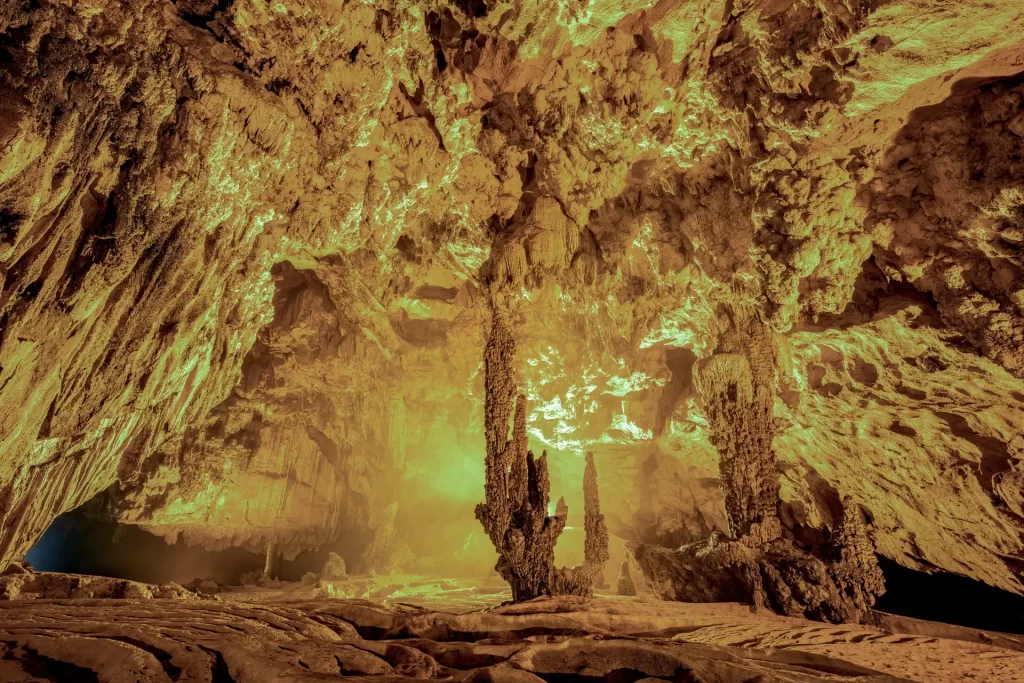
Stepping into Nguom Ngao is like entering another world. The cave’s interior is a dazzling display of stalactites and stalagmites, sculpted by millions of years of water erosion. These formations take on myriad fantastical shapes, resembling everything from mythical creatures and cascading curtains to terraced rice fields. The lighting inside the cave is strategically placed to highlight these natural sculptures, creating an ethereal and captivating atmosphere. The air is cool and fresh, and the sound of dripping water echoes through the vast chambers. It’s a truly spectacular natural wonder, offering a refreshing escape from the outside heat and a testament to the Earth’s artistic capabilities. A visit to Nguom Ngao Cave perfectly complements the powerful majesty of Ban Gioc Waterfall, offering a fascinating underground counterpoint to the towering cascades above.
Scenic Drives and Ethnic Encounters
Beyond the major attractions, a significant part of the charm of Cao Bang lies in its breathtaking scenic drives and the opportunities to encounter its diverse ethnic minority communities. The roads, though sometimes winding and challenging, offer panoramic views of lush green valleys, terraced rice paddies clinging to mountainsides, and dramatic limestone karsts piercing the sky. Renting a motorbike (if experienced) or hiring a private car with a driver allows for incredible flexibility to stop at viewpoints, capture stunning photographs, and simply soak in the mesmerizing beauty of the landscape.

Cao Bang is home to numerous ethnic minority groups, including the Tay, Nung, Dao, Hmong, and San Chay. Each group possesses its own unique traditions, languages, colorful costumes, and culinary delights. Visiting local villages, especially during market days, offers a vibrant glimpse into their daily lives and cultural practices. The people of Cao Bang are known for their warmth and hospitality, and a simple smile or gesture can open doors to memorable interactions. You might witness traditional weaving, observe local farming methods, or even be invited to share a cup of tea, providing an authentic and enriching cultural exchange that contrasts sharply with the fast pace of cities like Hanoi.
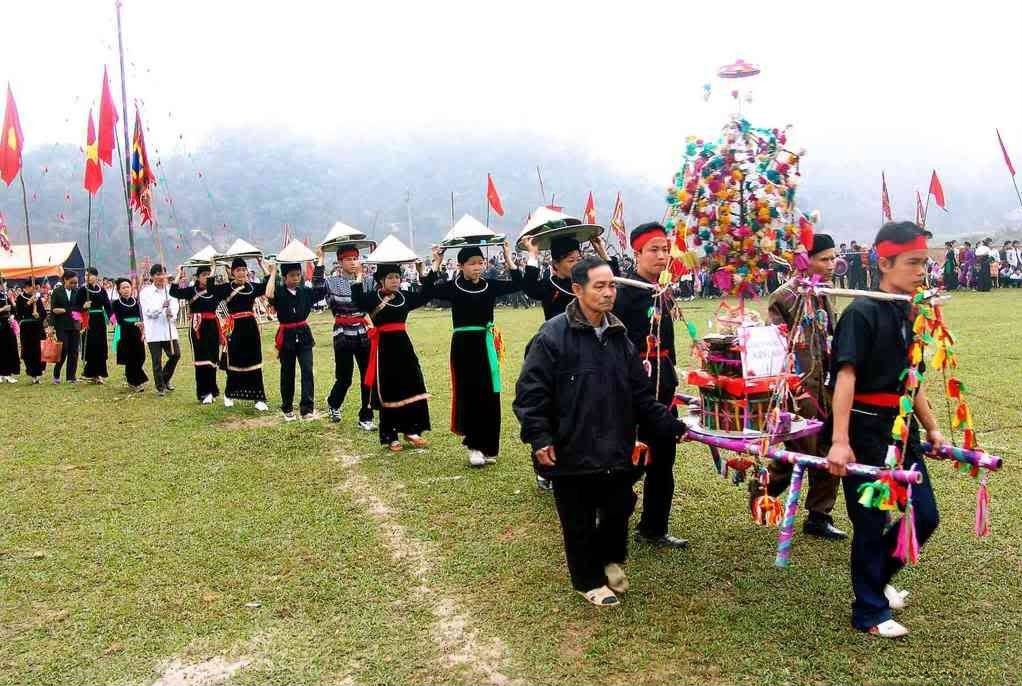
See more:Discover Pù Luông, Thanh Hóa: Travel Tips & Transportation Guid – Ninh Binh Transportation
Trekking and Outdoor Adventures
For those seeking more active pursuits, Cao Bang offers ample opportunities for trekking and outdoor adventures. The mountainous terrain and pristine natural environment are ideal for exploring on foot. Various trails lead through dense forests, past cascading streams, and up to panoramic viewpoints. While formal trekking routes might be less developed than in areas like Sapa, local guides can be hired for customized treks, leading you to hidden waterfalls, remote villages, and breathtaking vistas off the beaten path.
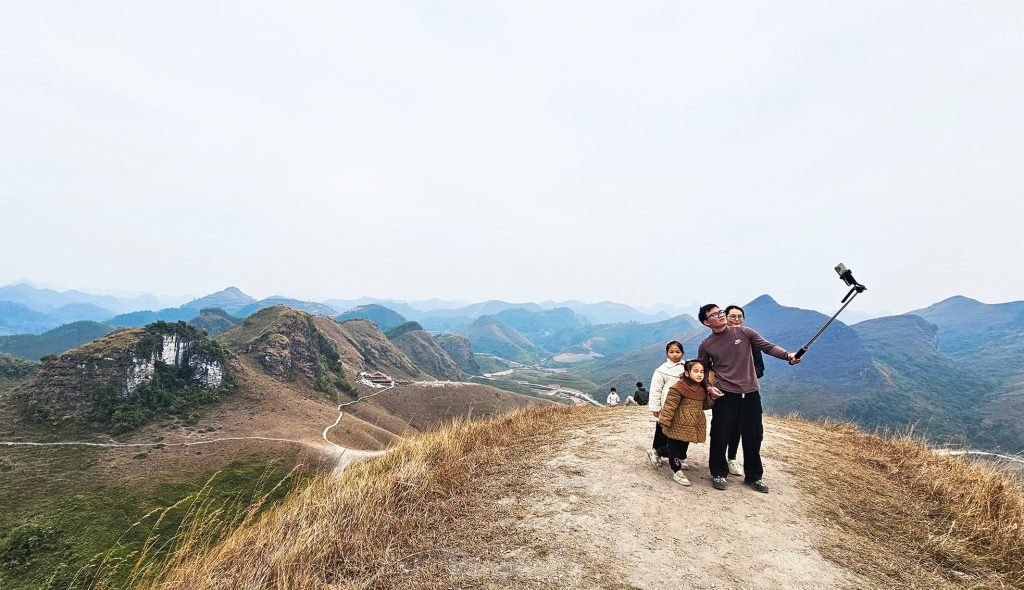
Birdwatching is another rewarding activity in Cao Bang, with its diverse ecosystems supporting a wide array of avian species. The tranquility of the untouched forests provides an ideal habitat for many unique birds, offering a serene experience for nature lovers.
Planning Your Adventure: Getting to Cao Bang
While Cao Bang is a remote province, its growing popularity means it’s becoming more accessible. However, it’s crucial to plan your journey, especially if you’re traveling from major hubs like Hanoi or even from the beautiful Halong Bay area.
See more:Halong Bay Transfer Service & Cruises – Halong Transportation
From Hanoi to Cao Bang:
- By Sleeper Bus: This is the most common and economical way to travel from Hanoi to Cao Bang. Buses depart frequently from My Dinh Bus Station in Hanoi, usually in the evening, arriving in Cao Bang City early the next morning. The journey typically takes 7-9 hours. Sleeper buses offer reclining seats or bunk beds, making the overnight journey relatively comfortable. Book your tickets in advance, especially during peak season or holidays.
- By Private Car/Taxi: For greater comfort, flexibility, and a direct journey, hiring a private car or taxi from Hanoi directly to Cao Bang is an excellent option, especially for groups or families. This allows for stops along the way to admire the scenery and manage your own schedule. The drive takes approximately 6-7 hours. This is the most convenient way to travel, though also the most expensive.
- By Motorbike: For adventurous and experienced riders, renting a motorbike in Hanoi and embarking on a multi-day road trip to Cao Bang is an unforgettable experience. The routes are incredibly scenic, winding through mountains, valleys, and rural villages. Ensure you have proper documentation (an international driving permit is a must), significant experience driving in Vietnam’s traffic, and prioritize safety with a good helmet and appropriate gear. This allows for incredible freedom to explore the numerous hidden gems along the way.
From Halong Bay/Ninh Binh to Cao Bang:
Direct public transportation from Halong Bay or Ninh Binh to Cao Bang is limited or non-existent, requiring a transit through Hanoi.
See more:Services Ninh Binh Transportation
- Option 1 (via Hanoi): Take a bus or private car from Halong Bay or Ninh Binh back to Hanoi. From Hanoi, follow the instructions above (sleeper bus or private car) to reach Cao Bang. This is the most practical and recommended approach.
- Option 2 (more complex): It might be theoretically possible to piece together local buses from Ninh Binh or Halong Bay towards northern provinces closer to Cao Bang (e.g., Lang Son), then connect, but this would be time-consuming, involve multiple transfers, and is generally not recommended for tourists due to language barriers and logistical complexities.
Getting Around Cao Bang:
Once in Cao Bang City, you’ll need transportation to reach the main attractions like Ban Gioc Waterfall, Pac Bo Cave, and Nguom Ngao Cave, as they are spread out.
- Motorbike Rental: This is the most popular way for independent travelers to explore. You can rent motorbikes in Cao Bang City for a reasonable daily rate. The roads to Ban Gioc and Pac Bo are generally well-maintained, but some stretches can be winding or steep. Be confident in your riding skills.
- Taxi/Private Car with Driver: For those who prefer not to ride a motorbike, hiring a taxi or a private car with a driver for a day or two is a comfortable and safe option. Your hotel in Cao Bang City can assist you in arranging this.
- Local Tour Operators: Many guesthouses and hotels in Cao Bang City can arrange guided tours to the main attractions, often in small groups. This is a convenient option if you prefer an organized trip.
Where to Stay and What to Eat
Cao Bang City offers a range of accommodation options, from budget guesthouses to mid-range hotels. While not luxurious, they provide comfortable bases for exploring the province. It’s advisable to book ahead during peak season. Homestays in local villages are also becoming increasingly popular, offering a more authentic cultural immersion experience.
The cuisine in Cao Bang is a delightful blend of Vietnamese and ethnic minority flavors. Don’t miss local specialties such as:
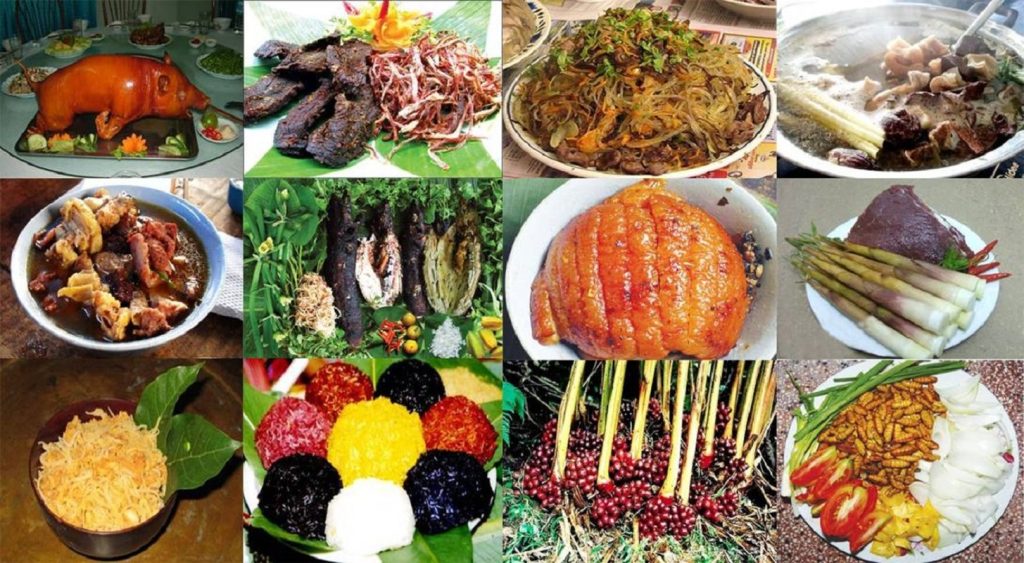
- Bánh cuốn Cao Bằng: Steamed rice rolls often served with a unique pork bone broth and chili sauce.
- Phở Chua (Sour Pho): A refreshing pho salad with various ingredients and a tangy dressing.
- Trùng Khánh Chestnut (Hạt dẻ Trùng Khánh): Famous sweet chestnuts, often roasted.
- Black Sticky Rice (Xôi Đen): A unique, savory sticky rice dish.
Exploring the local markets in Cao Bang City is also a treat, where you can sample street food, buy fresh produce, and observe daily life.
Important Tips for Visiting Cao Bang
- Pack Layers: Temperatures can vary significantly between day and night, and between different altitudes.
- Comfortable Shoes: Essential for walking, trekking, and exploring caves.
- Rain Gear: Always carry a light rain jacket, especially during the rainy season.
- Insect Repellent: Crucial, particularly for visits to natural areas and during the evenings.
- Sun Protection: Sunscreen, a hat, and sunglasses are vital.
- Cash: ATMs are available in Cao Bang City, but smaller villages and vendors may only accept cash.
- Photography: Bring your camera! The landscapes are incredibly photogenic.
- Respect Local Culture: When visiting ethnic minority villages, dress modestly, ask for permission before taking photos of people, and respect local customs.
- Learn Basic Vietnamese: A few simple phrases like “Xin chào” (hello) and “Cảm ơn” (thank you) can go a long way.
- Visa Requirements: Ensure your Vietnamese visa is in order, especially if you plan to visit areas close to the Chinese border.
Conclusion: A Journey to Vietnam’s Untamed North
Cao Bang is a destination that truly embodies the spirit of discovery. It offers a captivating blend of majestic natural wonders, profound historical narratives, and rich cultural encounters that are increasingly rare in a world of well-trodden tourist paths. From the awe-inspiring cascades of Ban Gioc Waterfall to the poignant echoes of history at Pac Bo Cave, and the breathtaking underground artistry of Nguom Ngao Cave, Cao Bang invites travelers to step off the familiar routes from Hanoi and delve into a frontier of untouched beauty and genuine hospitality. It’s a journey that challenges, inspires, and ultimately rewards with memories that will last a lifetime.
When planning your comprehensive Vietnam adventure, ensuring seamless and reliable transportation is key, especially when connecting diverse regions. Whether you’re moving between the cultural heart of Hanoi, the stunning karsts of Ninh Binh, or even planning your onward journey from the enchanting Halong Bay area, securing dependable transport is paramount. For your travel needs in the northern region, including convenient connections, consider Halongtransportation.com. While their primary focus is on Ha Long, their commitment to reliable service extends to assisting with various travel arrangements, ensuring a smooth and comfortable experience as you explore the wonders of Vietnam, from the bustling cities to the serene landscapes of Cao Bang.





